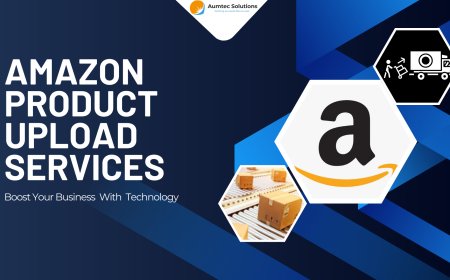What is Software Product Development? A Beginner's Guide
Planning is not just a preliminary step in software product development; it is a continuous process that guides the entire project from conception to launch and beyond.

Software plays a crucial role in nearly every industry, from healthcare to finance, education to entertainment. But how do these software solutions come to life? The answer lies in software product development—a structured process that transforms ideas into fully functioning software products.
Whether you are a business looking to develop a new application or a budding developer eager to understand the field, this beginner's guide will walk you through the basics of software product development.
Understanding Software Product Development
At its core, software product development refers to the entire process of designing, building, testing, and deploying a software product. Unlike custom software development, where solutions are built for a specific client or purpose, software product development usually involves creating software that will be sold to a broader audience, either as a standalone product or as part of a larger offering.
The process involves several stages, including ideation, design, development, testing, and maintenance. Each phase requires collaboration among various stakeholders, including developers, designers, project managers, and business analysts, to ensure the final product meets the needs of its users.
Key Stages of Software Product Development
To better understand software product development, let’s break down the key stages involved in the process:
1. Idea Generation and Market Research
Every software product begins with an idea. This could be a solution to a specific problem, an enhancement of an existing product, or an entirely new innovation. The first step in software product development is to brainstorm and refine the idea.
Once the idea is defined, it’s crucial to conduct market research. This involves analyzing the target audience, understanding competitors, and identifying market trends. Market research helps validate the idea, ensuring there is a demand for the product and that it aligns with the needs of potential users.
2. Planning and Requirements Gathering
Once the idea is validated, the next step is planning. This phase involves defining the scope of the project, setting goals, and outlining the features and functionalities of the software. It's essential to gather detailed requirements from stakeholders to ensure that the product will meet the intended purpose.
During this stage, a project plan is created, which includes timelines, milestones, and resources needed for development. Planning is crucial as it sets the foundation for the entire development process.
3. Design
Design is a critical phase in software product development. This stage involves creating the visual and functional blueprint of the software. It includes both UI (User Interface) design, which focuses on the look and feel of the product, and UX (User Experience) design, which ensures the product is user-friendly and intuitive.
Wireframes, mockups, and prototypes are often created during this phase to visualize the product's layout and functionality. The design phase is an iterative process, involving feedback and revisions to ensure the final design meets user expectations.
4. Development
The development phase is where the actual coding and building of the software product take place. During this stage, developers work to transform the design and requirements into a functional software product. The development process can be divided into front-end (client-side) and back-end (server-side) development.
Front-end development focuses on building the user interface and ensuring that the product is responsive and accessible. Back-end development involves creating the server, database, and application logic that power the software.
Depending on the complexity of the software, development may be done in stages, often following Agile or other iterative methodologies. This approach allows for continuous feedback and adjustments throughout the development process.
5. Testing and Quality Assurance
Testing is a critical component of software product development, ensuring that the product functions as intended and is free of bugs or issues. During this phase, the software is rigorously tested to identify and fix any defects. Testing can be divided into several categories:
- Unit Testing: Testing individual components or modules of the software.
- Integration Testing: Ensuring that different components of the software work together seamlessly.
- System Testing: Testing the entire software product as a whole to validate its functionality.
- User Acceptance Testing (UAT): Testing the product with real users to ensure it meets their needs and expectations.
Quality assurance (QA) is also an essential part of this phase, focusing on maintaining high standards throughout the development process and ensuring the product is reliable, secure, and performs well under various conditions.
6. Deployment and Launch
Once the software has passed all testing phases and is ready for use, it’s time to deploy and launch the product. Deployment involves making the software available to users, either through installation on devices, hosting on servers, or distribution through app stores or online platforms.
A successful launch requires careful planning, including marketing and promotional efforts, to ensure the product reaches its target audience. Post-launch support is also critical, as it involves monitoring the software’s performance, gathering user feedback, and addressing any issues that arise after the release.
7. Maintenance and Updates
The software development process doesn’t end with the launch. Maintenance is an ongoing phase that involves fixing bugs, making improvements, and updating the software to ensure it continues to meet user needs.
Software products often require updates to stay compatible with new operating systems, devices, or security protocols. Additionally, as user feedback is gathered, new features or enhancements may be added to keep the product competitive in the market.
Why is Software Product Development Important?
Software product development is essential for creating innovative solutions that meet the needs of users across various industries. Here are a few reasons why it’s crucial:
- Innovation: Software product development drives innovation by creating new products that solve problems or enhance existing solutions.
- Scalability: Well-developed software products can scale to accommodate growing user bases and evolving requirements.
- User Satisfaction: By focusing on user needs and continuously improving the product, software development ensures that users have a positive experience.
- Competitive Advantage: Developing a unique and well-functioning software product can give businesses a competitive edge in their market.
The Role of Agile in Software Product Development
Agile methodology plays a significant role in modern software product development. Agile is an iterative approach that emphasizes collaboration, flexibility, and customer feedback. Instead of following a linear process, Agile breaks the project into smaller increments called sprints. Each sprint results in a working version of the product that can be tested and reviewed by stakeholders.
The benefits of Agile in software product development include faster time-to-market, the ability to adapt to changing requirements, and continuous improvement throughout the development process.
Conclusion
Software product development is a multifaceted process that requires careful planning, collaboration, and execution. From the initial idea to the final product, each stage plays a crucial role in bringing a software product to life. By understanding the basics of software product development, businesses and developers can create innovative and user-friendly solutions that meet the needs of their target audience.
Whether you’re a beginner or a seasoned professional, embracing best practices in software product development will ensure your products are not only functional but also successful in the competitive software market. As technology continues to evolve, so too will the methods and tools used in software product development, making it an exciting and ever-changing field to be a part of.
What's Your Reaction?

























